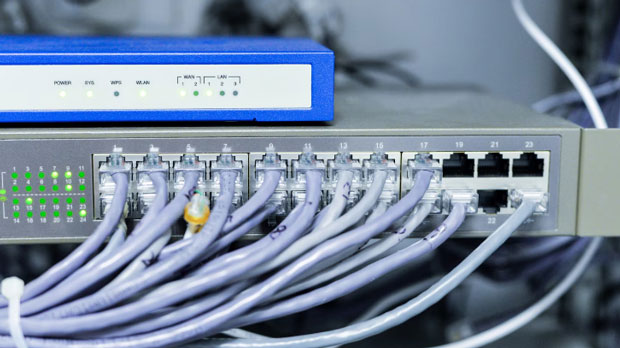When it comes to navigating the complex world of online privacy and security, selecting the right type of proxy service is crucial. Two popular options are Proxy Gratis and residential proxy services. While both serve to mask a user's IP address and help maintain anonymity, they differ significantly in their functionality, performance, and use cases. This article explores how to make an informed choice between the two, focusing on factors such as speed, reliability, cost, and the specific needs of individuals or businesses. What Are Proxy Gratis and residential proxies?To better understand how to choose between Proxy Gratis and Residential Proxy services, it’s important to first define what each term means.Proxy Gratis refers to free proxy services, which are often used by individuals looking for basic anonymity or security features. These proxies are typically free to use and are commonly available in shared or public formats. However, the lack of control over these services can lead to slower speeds, reliability issues, and security risks.Residential Proxy services, on the other hand, are paid services that offer more reliable, faster, and secure connections. These proxies use real IP addresses from real residential locations, making them much harder to detect and block compared to other types of proxies. Residential proxies are ideal for use cases that require high levels of anonymity, such as web scraping, managing multiple accounts, or bypassing geographic restrictions.Performance and SpeedOne of the most significant factors to consider when choosing between Proxy Gratis and Residential Proxy services is performance and speed. Free proxies, by nature, tend to offer lower speeds and less reliable performance. Since Proxy Gratis services are usually overcrowded with users, you might experience slow connections and occasional downtime, especially during peak usage hours.Residential proxies, on the other hand, provide faster and more stable connections. Because they use real residential IPs, they tend to have less traffic congestion, which results in higher speeds and more reliable connections. This makes residential proxies ideal for businesses or individuals who require seamless access to websites or services that demand consistent, high-speed connections.Security and AnonymitySecurity is another essential consideration when choosing a proxy service. Proxy Gratis, especially free ones, often pose significant security risks. Since these proxies are free, they may not invest in robust security measures, leaving your data vulnerable to hacking or tracking. In addition, some free proxies might sell your data to third parties, compromising your privacy.Residential proxies, on the other hand, offer a higher level of security. These proxies are more difficult to detect, as they are routed through real residential IPs, which helps maintain your anonymity. Residential proxies also tend to be more secure because they are part of a paid service, which often includes better encryption, regular maintenance, and customer support.Cost ConsiderationsCost is a critical factor when making a decision between Proxy Gratis and Residential Proxy services. As expected, Proxy Gratis services are free to use, making them an attractive option for individuals or small projects on a budget. However, the trade-off is the lower quality of service, which can result in frustration and inefficiency.Residential Proxy services, being paid, can be more expensive. The cost is typically based on the number of proxies you need, the amount of data you plan to use, and the level of service required. While the upfront cost may seem high, residential proxies provide better value in terms of performance, security, and reliability, particularly for businesses or professionals who rely heavily on proxies for sensitive tasks like web scraping or competitive analysis.Use Cases and Practical ConsiderationsThe choice between Proxy Gratis and Residential Proxy services ultimately depends on the specific use case.1. Casual Browsing and Basic Privacy: If you are simply looking for occasional online anonymity for personal browsing, Proxy Gratis might be sufficient. Free proxies can help you avoid geo-restrictions and provide a basic layer of privacy for general internet activities.2. Web Scraping and Data Mining: For businesses or developers engaged in web scraping or data mining, residential proxies are the better choice. Free proxies often fail to bypass advanced bot protection, while residential proxies, with their authentic IP addresses, can blend in seamlessly and avoid detection, making them ideal for large-scale data collection.3. Managing Multiple Accounts: Residential proxies are essential when managing multiple social media or e-commerce accounts. Using free proxies might lead to account bans or issues due to the use of blacklisted IP addresses. Residential proxies offer greater anonymity and reduce the risk of detection, making them the preferred option.4. Bypassing Geo-Restrictions: While Proxy Gratis can sometimes work for bypassing geographical restrictions, they are more prone to being blocked or flagged. Residential proxies are much more effective in this regard because they provide a broader range of IP addresses that appear as if they are from different regions, making it easier to access restricted content.Reliability and Customer SupportReliability is crucial when selecting a proxy service, especially for businesses that rely on consistent access to online resources. Free proxies often come with limited support, and if they encounter issues, users may not have the option to seek immediate help.Residential proxies, as part of a paid service, typically come with customer support and a higher level of reliability. Providers offer 24/7 assistance, maintenance, and troubleshooting, which ensures that users can resolve issues promptly and minimize downtime.Conclusion: Making the Right ChoiceIn summary, the decision between Proxy Gratis and Residential Proxy services largely depends on your specific needs. If you are looking for a low-cost, basic proxy for light, casual browsing, Proxy Gratis may be sufficient. However, if you require high levels of security, reliability, and performance for tasks such as web scraping, managing multiple accounts, or bypassing geo-restrictions, investing in residential proxies is a better choice.Ultimately, businesses and individuals who rely heavily on proxies for sensitive tasks should prioritize residential proxies due to their superior speed, security, and support. Although they come at a higher cost, they provide far greater value for serious use cases, ensuring that your online activities remain private, secure, and efficient.
Jul 04, 2025



































































